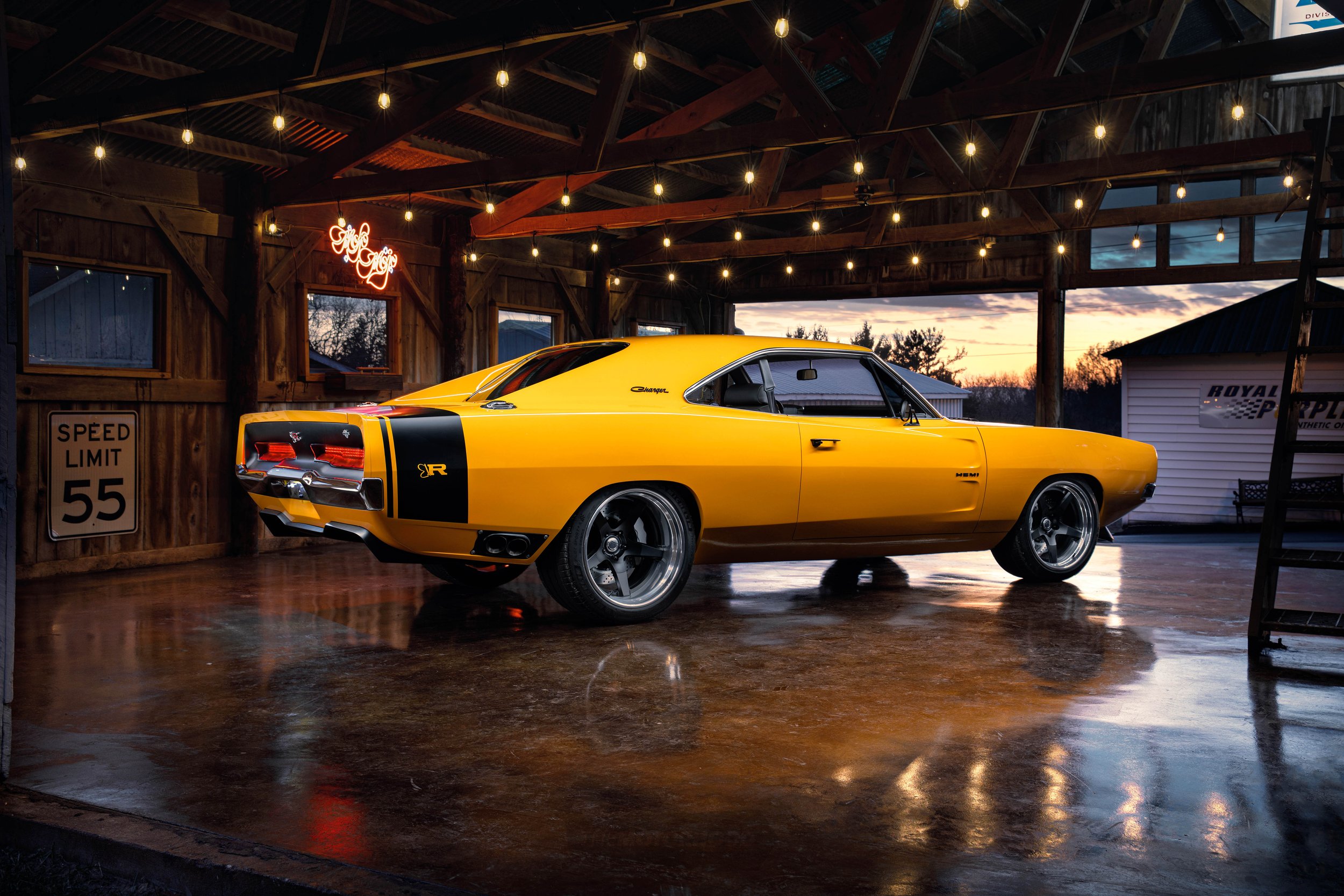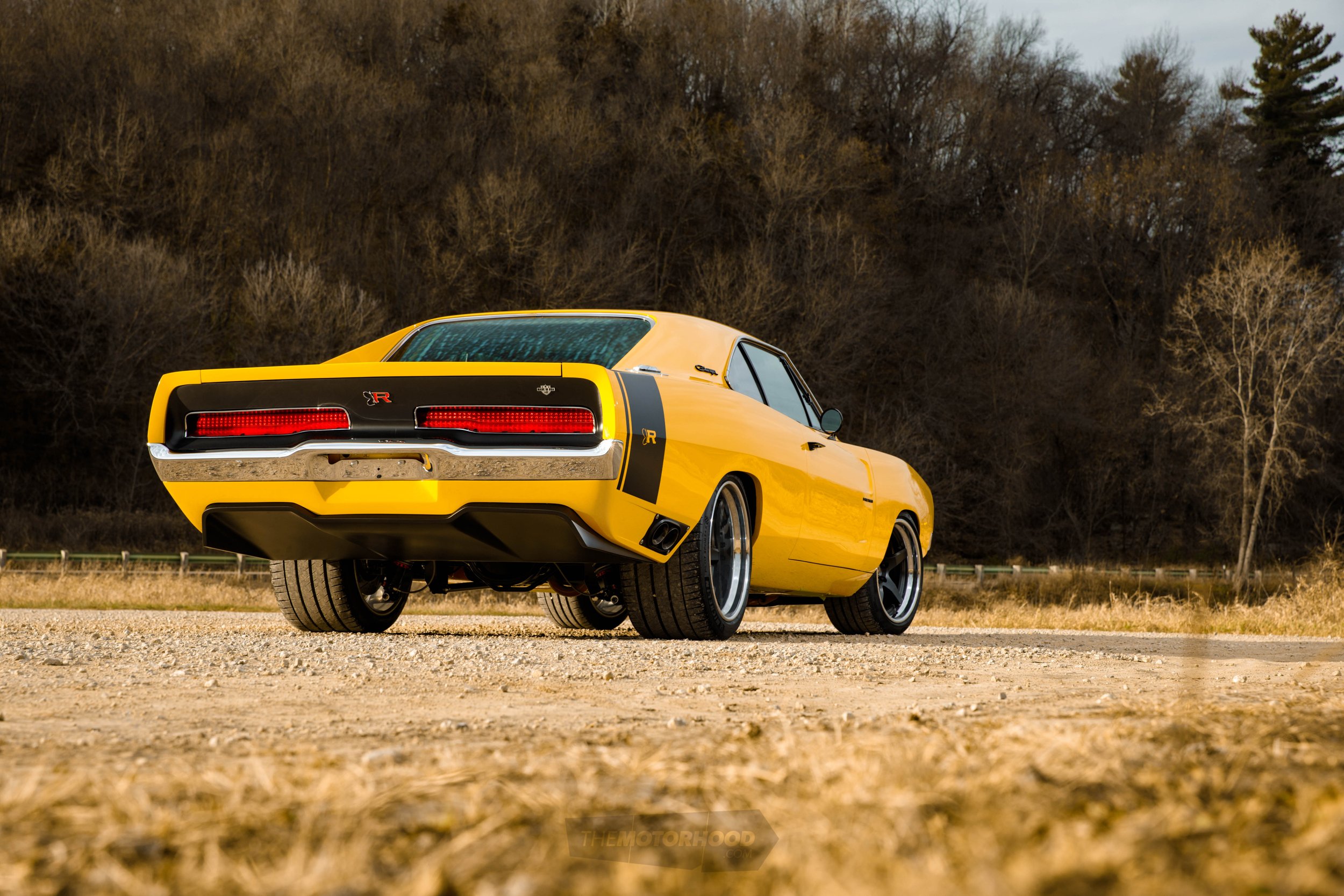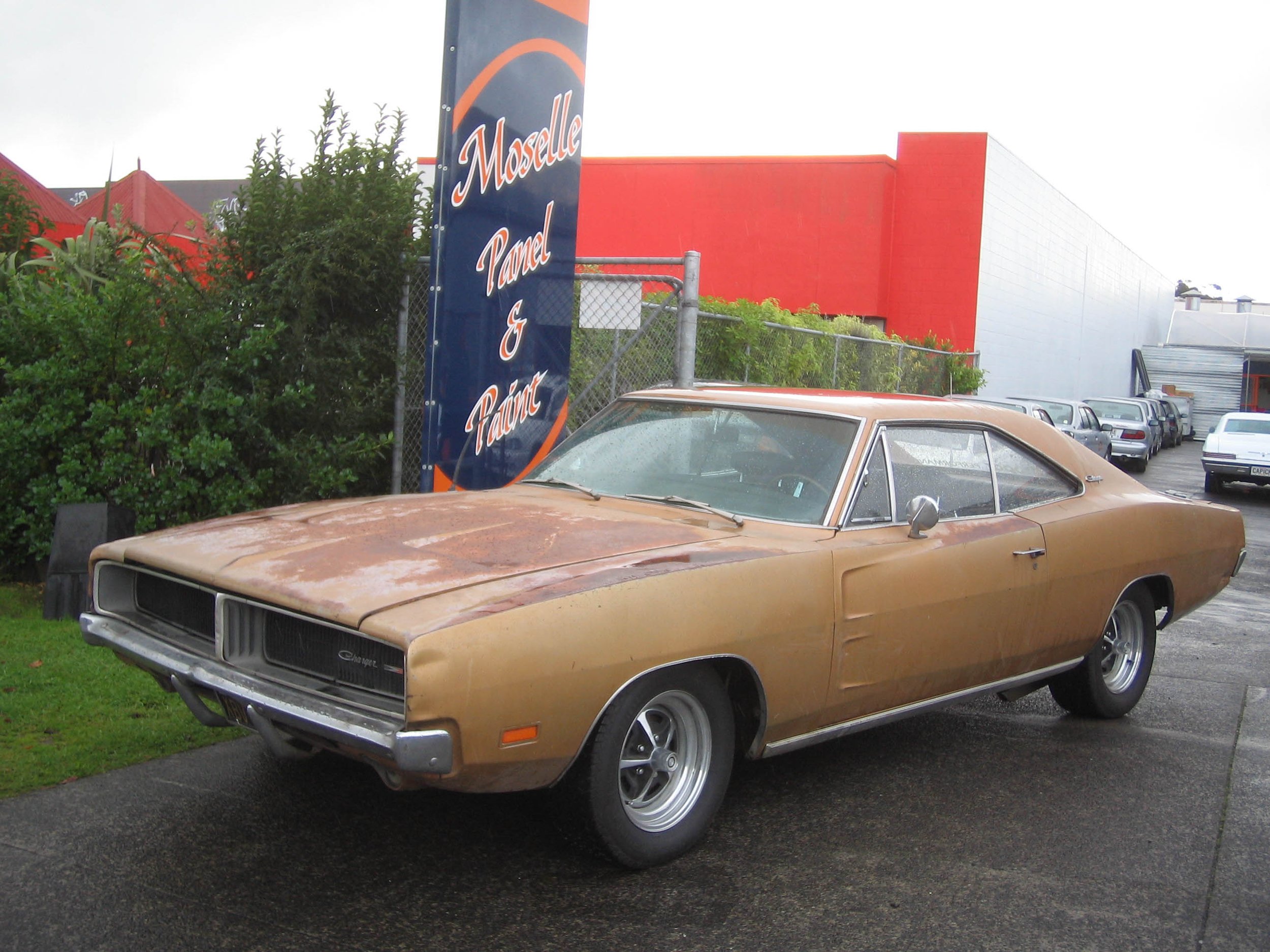When a legend of the New Zealand Motorsport scene teamed up with legendary American car builders, the outcome was always set to be amazing!
Words: Todd Wylie Photos: McGaffin Photography/Kahn Media




The name Greg Murphy needs no introduction on these pages. He’s been kicking arse on racetracks around the globe for decades before stepping down from the podium to hand the reins over to the next generation. Among his numerous accolades are the legendary ‘lap of the gods’ run around Mount Panorama and countless V8 Supercars podium positions.
But what separates Murph from some other drivers is that he’s a legitimate car guy, the type of bloke that it’s easy to sit down with over a beer and just talk cars. Needless to say, he’s owned his fair share of cool rides over the years, ranging from Escorts and Datsuns through to a number that would be at home in these pages, along with a handful of late-model powerhouses. His tastes tend to lean towards Mopar muscle cars, so a few have passed through his hands, although none have stayed in his ownership for as long as this one.
We even featured his ’69 Charger on the cover of NZV8 back in Issue No.73 when it was in bare metal form. While we knew then the car was destined to be something special, we never predicted what would unfold over the ensuing years. A trip to the SEMA Show had him falling in love with the Recoil Chevelle, built by Ringbrothers (as seen in NZV8 Issue No.118). Murph was so impressed with the style, build quality, and innovation of the car, he began wondering about the possibility of sending his Charger over to their Spring Green, Wisconsin headquarters. Of course, Greg was also very loyal to the friendship and support of the team at Moselle Panel and Paint with whom the build had begun, and had the chat with them to confirm they were on board with the idea, which of course they were.
The Ringbrothers team was equally impressed when the car arrived, clearly not used to seeing metalwork to the quality of what Moselle had performed on the car, and very vocal about how impressed they were with the work that had been done to date. Back when the car was shipped over, we were still free to travel, so Murph and his crew — including Steve Noyer and Bryce Hilton from Moselle — made the trip to Wisconsin to meet with Ringbrothers in April 2019 and run through the proposal for the build in person.

The plan at this stage was to prepare the car for the SEMA show later in the year, but that plan didn’t eventuate as other customers’ cars took priority, but that worked out just fine for Murph who could keep working with the team to make sure he made the most of this once-in-a-lifetime opportunity. However, as we now know, Covid would step in making international travel, and hosting events such as the SEMA show, impossible for a few years. It was due to this that effectively the car was held captive, which sparked the CAPTIV name it’s now been adorned with.
Keen eyes may notice that the Nascar-sourced 358ci engine Murph had originally planned to run is no longer in the vehicle, but has been replaced with a Hellcat-sourced 707hp 6.2-litre Hemi, backed by a six-speed manual transmission. “It’s unreal how quickly the guys over there can get parts,” Murph told us previously about sourcing the engine. Of course, when Ringbrothers call you saying they want a part, you’d be a fool not to deliver, which is likely why they have such a great network of loyal build partners, some of whom they called on for this build. While Murph and the Moselle crew always had high aspirations for the vehicle, the extra doors that opened with the car being abroad allowed it to really be taken to the next level. “The ability and relationships that a shop like that has have been a huge contributing factor to this build. They’ve also got such great partners they work with, who have also played a big part in it,” says Murph.
One thing that was always planned was to turn the vehicle into a unibody, meaning that the Art Morrison chassis would become an integral piece of the body structure, rather than something the body was simply bolted to. This was the first job for Ringbrothers once it landed, and happened before conversations could take place about how the interior would be built. Seeing that the interior of Recoil was one of the factors that drove him to take the car to them, he was more than prepared to listen to the brothers’ suggestions.




Of course, he also had a clear wish list of his own, and that included that the interior must be uncluttered, yet not look out of place in a modernised ’60s muscle car, and include some modern tech. A key to this was the selection of a MoTeC C1212 dash which was fitted into a CNC-machined bezel, then fitted into an all-new aluminium dashboard panel inspired by Recoil’s dash. The controls for the MoTeC look very much like a modern drive mode dial you’d find in a late-model European vehicle and give Murph that modern tech he was after. The level of detail that has gone into housing the 12-inch screen is incredible and includes the MoTeC logo that makes it look almost as if it’s an off-the-shelf item.
Likewise, the amount of time and effort that has gone into getting the shapes of the rest of the interior componentry correct is clear to see. For example, the custom console that houses the touchscreen Fusion head unit is a work of art on its own. While the door panels have been on the receiving end of a similar level of work as the dash and console, it’s the floors that tend to get the attention. Fabric trimmed with large, molded rubber-wear areas, the look is industrial yet unlike anything else we’ve ever seen before. It’s definitely the iconic Ringbrothers look that Murph wanted while, at the same time, paired back to be more user-friendly than some of their other more extreme builds.
The steering wheel fits that same description, crafted specifically for Murph out of carbon fibre with a billet centre ring, and featuring a race-style flat bottom. The seats — trimmed by Upholstery Unlimited along with the rest of the soft furnishings — started life as off-the-shelf Recaros. Obviously, the Upholstery Unlimited team worked plenty of magic on them to reshape them to suit Murph’s preferences before re-trimming them. That style, of both interior and exterior, was penned up by Gary Ragle Designs, a man entrusted with the design of most Ringbrothers’ builds.





Murph was clear when briefing him about what he wanted from the outset, which included a rear diffuser to hide the diff and fuel tank, along with a nice chin spoiler, and a seamless look for interior and exterior. That was on top of the bodywork that had already been performed by Bryce at Moselle, such as the tucked-in bumpers, extended sills, and raised rear quarters, work performed so well that Ringbrothers has offered him a job any time he wants it. The illustrations of the planned modifications were then sent to Murph for approval before being undertaken in-house at Ringbrothers. “Gary nailed it with the first drawing. It was perfect. The print-out of his concept was then stuck to the car and used as a guide for the rest of the build,” says Murph.
The car was never yellow in the illustrations though, which came about much later in the process. In fact, it wasn’t decided until 2020 when Mike and Murph started talking about the colour in greater detail, and it was Murph who landed on the Porsche Signal Yellow hue. The colour was modified slightly, and multiple spray outs performed, but thankfully, much like the rest of the build, Murph and the Rings all preferred the same option. BASF/Glasurit was the paint supplier of choice, while Global Finishing Solutions supplied the paint booth needed. Getting the right finish on the brightwork was equally as critical as the paint, and the reason why the Rings sent the bumpers and any other components requiring chroming to Advanced Plating in Tennessee. Later in the build, the colour would receive a custom name of Pile-up Yellow, thanks to a passer-by being so taken with the colour when the car was on its first drive that they proceeded to crash … thankfully not into the Charger!
The engine bay doesn’t feature any chrome work, however, as it takes more of a factory feel, thanks in part to the Hellcat motor being fitted complete with its factory airbox. That simple look belies the amount of work that has gone into its creation, as it was far from a simple drop-in affair. With the engine’s supercharger sitting above bonnet height, the decision was made to centralise it in the engine in the bay, and keep the supercharger exposed. With the black stripe work on the exterior, it’s a touch that almost goes unmissed at first glance. So does the fact the motor is matched with a manual gearbox, something that’s not offered in factory form. While there may have been plenty of controversy lately around the question of whether V8 Supercars should be fitted with manual, or even H-pattern boxes, in Murph’s early Supercar days there was no other option, and he was perfectly fine with that, loving an H-pattern style ‘box. To handle the 707hp and 881Nm the motor produces, the build team fitted a Bowler Transmissions Tremec T-56 six-speed. The stout transmission sends power through a QA1 carbon fibre driveshaft to a John’s Industries 9-inch diff.
The 6.2-litre Hemi package is allowed to breathe thanks to Flowmaster headers and a Flowmaster 44-equipped exhaust system. Rather than run the exhaust out the back, custom exits were created just behind the wheels in a near-identical style to Recoil. Speaking of which, after going back and forward on wheels, Recoil was once again the source of inspiration. While the 20×11 and 20×13-inch HRE wheels were custom made for the car, they were based on Recoil’s wheels, albeit without the centre ring seen on that car. It wasn’t just a matter of unbolting the rings though, as that would leave divots and bolt holes, which would never cut it on a build of this magnitude.



For most of us an Art Morrison Chassis and the C6 Corvette-style front suspension that design incorporates would be enough, but, funnily enough, Murph’s got slightly more car set-up and driving experience than the rest of us. To ensure
it was up to his demanding specs, he swapped the suspension out on each end for QA1 Mod series coilovers and upgraded the swaybars to the firmest option available. Most Ringbrothers’ cars end up equipped with Baer brakes, and this one would be no different, receiving six-piston calipers on both ends, along with 14-inch rotors. These massive calipers are controlled off a stock 2020 Challenger brake booster and master cylinder set-up that works in conjunction with a custom pedal assembly. Sadly, at the time of writing, Murph hasn’t been lucky enough to press the pedals yet as, like the rest of us, he’s been stuck on this little island while Covid takes over the globe. Although part way through the build the plan was for the car to be unveiled at the SEMA show, holding on to it that long would only increase the agony of having such a cool car completed, yet out of reach, so it’s now being prepared for shipping back Down Under.
While some cars of this level will only get to live within the comfort of a show hall or an enclosed trailer, you can bet that Murph will be out there driving this one as he’s been dreaming of for more years than he’d care to remember. “I still haven’t quite found the words to express my gratitude to the awesome Ringbrothers’ team for this unforgettable experience and this stunning build,” he stated on its unveiling. Lucky for us Kiwis, we’ll soon get to check it out in person, too!





This article originally appeared in NZV8 issue No. 203





